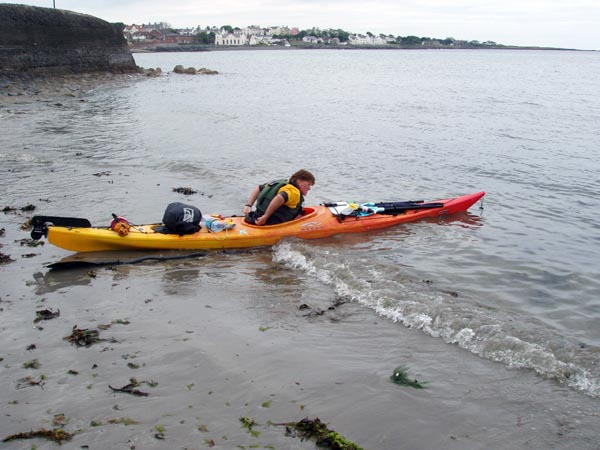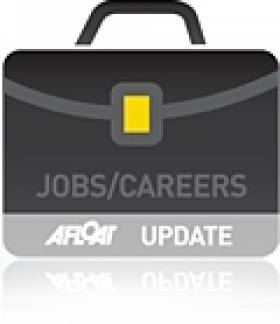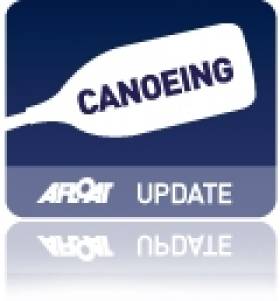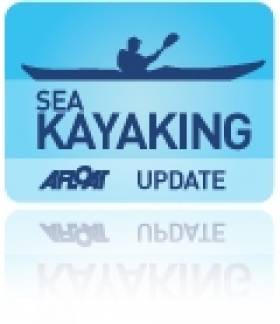Displaying items by tag: Share Holiday Village
Fast Track Instructor Course Helps Candidates Land Dream Job
#instructorcourse – An innovative training programme on the shores of Upper Lough Erne is set to welcome participants from all over the UK and Ireland to undertake Outdoor Instructor Training and fast track them into a career in the outdoors.
Share Discovery Village are offering an intensive 15 week modular course focusing on water sports such as Dinghy Sailing, Windsurfing, Canoeing, Kayaking and Power Boating. The Fast Track Water Sports Course enables participants to gain the internationally recognised national governing body qualifications, skills and experience to qualify as outdoor instructors in time for the Spring season when most sun based destinations begin recruitment. As Share Course Co-ordinator Damien Smith suggests;
"The course is a springboard for people completing a sports or outdoor related degree to gain the qualifications needed to work in the industry, or indeed for people to gain some sought-after qualifications that will enable them to work whilst travelling the world. Our friendly and highly experienced Instructors are at the top of their game and looking forward to meeting new people and working on the new programme."
With over 30 years' experience in running instructor training programmes, SHARE is now the largest and most well renowned residential outdoor activity centre in Ireland. Based in County Fermanagh, on the shores of Upper Lough Erne, SHARE offers the ideal lakeside location to deliver, top quality water based training programme.
Starting with an open day in late October, potential candidates are welcomed to try out some of the activities, see the vast range of facilities and equipment on offer and have any pertinent questions answered, before signing up for the course which begins in November 2012. To ensure success to instructor level it's important to have at least a basic personal skills level in each of the three disciplines. SHARE's ten day foundation level course, run just prior to the main course, offers a kick start to the training in each discipline. Candidates will then undergo intensive month long tuition in each sport developing personal skills before undertaking instructor training.
This modular programme enables candidates already holding qualifications in the various sports the opportunity to pick and choose training to suit their needs, ensuring the course is cost effective and all encompassing for people on a gap year or career break, career changers, school leavers, university graduates and outdoor instructors wishing to develop their career further. However signing up for all three courses comes with an attractive 9% discount on the overall price.
SHARE are renowned for their all inclusive prices with no hidden extras, so candidates can avail of full board twin room accommodation in cosy chalets for the duration of each module, qualifications and all associated costs, savings of up to 40% on outdoor equipment, free use of Share Fitness- pool, sauna, Jacuzzi and steam room, and free use of Centre equipment including sailing boats, kayaks, canoes, windsurfing kit and sports hall.
Candidates must be 17 years old and over with a good level of physical fitness. For more information contact SHARE on +44 (0) 2867 722 122 or email [email protected]
Click here to access the application form and additional information directly.
Lough Erne Canoe Rally Paddles Against Global Warming
Ireland's largest residential activity centre, Share Holiday Village is proud to announce that the third annual brites Lough Erne Canoe Rally will take place on 25th and 26th September 2010.
This year the event, which attracts paddlers from all over Ireland, is set to have more of an environmental message as SHARE was heavily affected by the Fermanagh Floods in 2009, which some have attributed to the heavy rainfall associated with Global Warming. Indeed canoeing is the perfect platform in which to promote this environmental message to local schools and businesses as it is one of the more idyllic forms of recreation that can be enjoyed on Lough Erne.
Both Share and brites are leaders in the field of renewable energy. Over the past 10 years Share has installed the largest reed-bed water purification plant in Northern Ireland and has built up an extensive portfolio of renewable technologies. These include three wind turbines, four solar water heating systems, and four wood pellet burners. The fuel for these wood pellet burners is supplied by Balcas, the manufacturers of brites. Share can now boast of using 99% renewable electricity on site, and 90% renewable heat, resulting in a total overall offset of CO2 of almost 300 tonnes.
Paula Keelagher, brites Technical Development Manager, at Fermanagh based Balcas comments: "We are delighted to be supporting the Lough Erne Canoe Rally once again. It has been great to see the event develop over the last two years and we look forward to seeing many local companies, schools and organisations taking part this year. We will of course be entering into the spirit of the competition with our own brites team and wish everyone who is participating the best of luck."
Chris Scott, Marketing Officer, Countryside Access and Activities Network (CAAN) which the event also helps to promote comments; "It is great to see Share hosting such a professionally organised event on the Lough Erne Canoe Trail. The brites Lough Erne Canoe Rally is a fantastic showcase for this award winning trail. The event doesn't take itself too seriously, fun is the focus highlighted by the fact most points are awarded for the fancy dress competition on Saturday evening."
The event is set to make quite a splash amongst canoeing enthusiasts as Robert Livingstone, Share's Operations Manager, describes: "It is great to see the canoeing clubs, classes and organisations come on board to help promote the event. The competitive fancy dress element and the strict event rules with regard to using the same boat for all disciplines will make the event unique and lots and lots of fun for all involved. We are delighted to welcome back Boots and Paddles for the Special Olympics section of the event and hope that we can develop a similar group on Lough Erne".
For more information on the brites Lough Erne Canoe Rally and other outdoor activity packages please contact Rory – Share Marketing Officer on 028 6772 2122 or [email protected] or visit http://www.sharevillage.org/upcoming-courses-and-events/
26 Days to Circumnavigate Ulster By Kayak
Shooter's expedition started in difficult weather conditions which gradually deteriorated. Departing from Share Holiday Village on June 26th she faced two days of tough paddling to Ballyshannon into a head wind across the Broad Lough – Lower Lough Erne, which due to its size can be similar to paddling on the sea. On reaching Ballyshannon Elaine became slightly nervous about leaving the inland waters to brave the rolling seas, but eventually made it out through the breaking surf. A local lad who was fishing saw the kayak struggling in the surf and called the coastguard. After several attempts to contact Shooter, the coastguard helicopter was scrambled to ensure that this intrepid Kayaker was ok, as Elaine explains;
"Due to the tight weather conditions, I was concentrating on not capsizing as a sea kayak laden with gear can be very difficult to roll, so I missed the two phone calls from the coastguard. But on arrival in Teelin I checked my phone and realised that the helicopter that was circling overhead was probably for me! I'm glad to see that the people on the shore were looking out for me and that the coastguard was on alert however am sorry for any inconvenience I caused them."
Leaving the fishing community of Teelin, Shooter accompanied by a pod of Dolphins paddled up around Malinbeg and the fantastic coastline of Donegal in splendid weather where she was guided through caves and arches by a herd of Seals. On arrival at Rossbeg she stopped for some guidance from Rob Henshaw, an ex employee of SHARE, who has circumnavigated Ireland 3 times in a kayak, sailing boat and canoe.
Unfortunately the good weather didn't last and as she set out for Arranmore and Burtonport the wind and sea state increased.

"Local knowledge on an expedition like this is key, and can stop you from making some big mistakes. The locals around the coastline were extremely friendly and gave useful information freely. I couldn't have done it without all the help and support I received along the way. In the bad weather I got very frustrated that I wasn't making any progress, but fortunately I gained motivation and help from a friend – Adrian Harkin www.justkayak.ie whose knowledge of the tides and sea state helped me to get round the Inishowen Peninsula. This was definitely one of the toughest parts of the journey."
Once Elaine had made it round Malin Head the wind and swell were with her and she began to make real progress and get back on track. With a number of paddling partners she paddled from Glengad Head to Shroove and onto Portrush and Ballintoy in strong winds. From Fairhead and Torr Head the weather began to ease and she made it on as far as Cushendun where she had her second acquaintance with the emergency services.
I passed a boat heading the other direction who must have radioed the coastguard to say they saw a kayak out at sea in windy conditions. On arrival at Cushendun I saw a coastguard van close to the shore that was checking to see I made it to shore safely. It's funny that the first two things people say to you after you come ashore are 'what are you doing out in weather conditions like that' and when they hear about my expedition they ask 'are you mad?!'
Elaine paddled on to Glenarm, Larne and Whitehead then across Belfast Lough to Bangor in a small window where she would not have to deal with the swell created by the Stena HSS. From Bangor the weather turned bad again, the wind swung into the South East which meant that she had to deal with the head on wind. Hugging the shoreline for safety she found herself caught in several eddies (where the tide flows the opposite direction) which was making it even tougher.
"I was quite surprised about the tidal range on the East coast and with the strengthening head on winds, it felt like I was paddling uphill. I must have been too close to the shore, but I didn't want to venture too far from land in case some unexpected weather closed in."
Crossing the Strangford Narrows proved to be a challenge too far in the weather conditions and Elaine had to rest up in Portaferry for the night with SHARE'S chairman – Bill Hosford. The Narrows is one of Ireland's greatest tidal races with tidal ebb and flows of up to 15 knots. Bill describes his admiration for Elaine's journey;
"As I watched Elaine paddle out through the swell, I was overwhelmed by this one lady's determination, Elaine was concentrating hard on her paddling and crossed the waves quickly and skilfully! She made it safely across to Gunn Island, but for a few minutes, my heart was in my mouth!
However the hairiest part of her trip was yet to come. After stopping in Dundrum Bay for the night, Elaine attempted to paddle out through the surf at Newcastle which in a heavy boat can be extremely difficult. Realising that she may well capsize Elaine turned and 'Bongo Slid' back in losing some of the gear strapped to her boat. "I had to wait for 1.5hrs until the tide dropped and the sea state flattened. This experience had taken its toll on her boat as she found that her kayak had started to take on water. She stopped in Cornmill Quay courtesy of Life Adventure Centre to fix the damage to her boat.
The following day Elaine paddled from Annalong to Kilkeel and headed for Carlingford and into Dundalk Bay where she would enter the quieter inland waterways of the Fane River. However as she was paddling against the flow, the two days paddling to Lough Muckno was longer than she had first anticipated. From Lough Muckno she hit dry land where she got a lift 7kms to Ballybay where she entered the Dromore river system stopping at Tanagh OEC. Paddling on to Belturbet and Crom, Elaine entered the home straight to Share on Upper Lough Erne, where she had started 26 days earlier. She was greeted by Share Staff.
Although the initial paddle forms part of her training, Shooter's long term goal for 2011 is a goal is to complete the 1000 mile clockwise circumnavigation of Ireland in 2011 as a fundraiser for SHARE whose leisure suite was flood stricken last year.
If you are interested in following Shooter's Challenge you can join her facebook group: Canoe Around Ireland which will have regular updates on her progress as well as blogs for each day and photos and video footage en route.































































